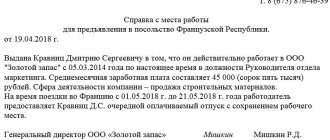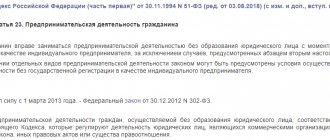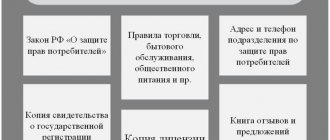The essence of the concept of tariff category
Peculiarities of document preparation
In accordance with the production and technical purpose in worker training, the following can be distinguished:
- initial professional training of workers who are hired by the enterprise but do not have the appropriate education;
- retraining (retraining) of employees (the opportunity to gain new knowledge in an area in which they do not have the appropriate education, but they can work there because a place has become available; persons who want to change their profession due to such a need in production);
- increasing the qualification level (completing special courses, the main goal of which is improving professional, economic knowledge, skills and abilities, climbing the professional ladder).
Assignment of categories to workers is assigned in accordance with paragraphs 10 – 21 of the General Provisions of the Unified Tariff and Qualification Directory of Works and Professions of Workers of the National Economy
Increasing a rank or assigning it to a worker (class, category) relies on a qualification commission, which is created by order of the employer. The head of such a commission is a person appointed by the employer. Regarding the composition of the commission, it may consist of:
- head or representative of the labor department;
- an employee who trains workers in production;
- occupational safety engineer;
- the head of the department whose employee must pass the commission.
In certain situations, the commission may include highly qualified specialists from their similar organizations, representatives of the trade union,
If the enterprise is small and it is impossible to create a commission, a qualification commission created by an educational institution of the appropriate profile can assign a rank to a worker.
The rules governing the work of the qualification commission can be separated into a separate act or be an independent part of the document. The content of the provision will contain the following information:
- number of people on the commission;
- powers;
- preparation and procedure for examinations;
- decisions that were made after the certification.
When conducting professional training on the basis of an enterprise, specialists who deal with this issue provide conditions for conducting exams.
Tariff category
Tariff category, class, category are concepts of tariff regulation of labor that reflect the level of complexity of the work performed by the worker, the necessary qualifications (professional training, work experience, specialist skills).
They are installed in accordance with the specifics of work and in accordance with the norms of the ET KS. They can be awarded upon graduation from a vocational educational institution, and then based on the results of assessments by the tariff and qualification commission, which is created specifically for this purpose.
In order for a qualification commission to be created, the employee must submit an application and representation from the head of the relevant workshop, department, or division.
The extent to which a specialist corresponds to the position held is verified by qualifying exams. They must be passed regardless of the form in which the training took place.
To be eligible to take part in qualifying exams, an employee must complete the entire operational and theoretical training course.
A worker who wants to increase his rank, or who is assigned a qualification rank, must orally answer the tasks from the “Must know” section and independently perform some types of work that are indicated in the sections: “Examples of work”, “Characteristics of work”. Also, members of the qualification commission will take into account the results of completing advanced training courses for specialists.
The employee needs to answer questions regarding the requirements and general level of professional knowledge, for example, he must know exactly his own responsibilities, instructions, internal labor regulations, labor safety standards and regulations, rules for the use of personal protective equipment, industrial sanitation and fire safety, requirements to rationalize the organization of work in the workplace, the requirements for the quality of work performed.
An employee who is assigned a higher qualification level, in addition to the work provided for by his tariff and qualification characteristics, must be able to perform work provided for by lower tariff and qualification characteristics, and manage employees of the lower grades of this specialty.
Before the examinations, the workshop manager/foreman provides the applicants with a work order - a document that will establish the task for performing the work, and also contain a list and time frame for their completion. How trial works can be selected:
- those that are typical for the enterprise;
- meeting certain standards (production standards, qualification level of the organization);
- not exceeding one shift in time, etc.
Before starting the task, the master must explain the conditions and procedure for completing the task. Further, the work order indicates the start time of the work and the end time.
Assignments to the worker are submitted in accordance with the qualification requirements that are described in the ET KS (in the section “Examples of work”). If the ET KS provides for the performance of several types of work within one specialty, the test is carried out in the one that the employee chooses.
After conducting an oral test of the employee’s knowledge, the commission:
- determines the level of complexity of the employee’s specific working conditions;
- evaluates the professional preparedness of the applicant, based on the tariff and qualification requirements for a certain qualification category;
- evaluates how well the work was done;
- determines what share of participation the employee has taken on in completing the task assigned to the structural unit;
- evaluates the personal characteristics of the applicant.
The exam is considered failed if:
- the employee did not meet production standards during trial work;
- the employee has not demonstrated the appropriate knowledge and skills required for the qualification level;
- the marriage was caused by the fault of the examinee;
- there are violations of labor safety requirements or there is no knowledge about them at all.
An employee who received an “unsatisfactory” grade may receive additional time for on-the-job training, after which the issue of re-admission to take the exam will be decided.
Based on the results of the assessments and the submitted documents for the exam, one of the following decisions can be made:
- that the employee does not meet the tariff and qualification characteristics of the declared category. The decision is made through open discussion. If the number of pros and cons is the same, a decision is made in favor of the employee;
- on the compliance of the employee’s qualifications with the declared qualification category and the assignment of this qualification category.
The final decision by the commission is made in the presence of the employee and is announced immediately after the decision.
This definition is given within the framework of the tariff system of remuneration. Document fragment. Article 143 of the Labor Code of the Russian Federation Tariff systems of remuneration are remuneration systems based on a tariff system of differentiation of wages for workers of different categories.
The tariff system for differentiating wages for workers of different categories includes: tariff rates, salaries (official salaries), tariff schedule and tariff coefficients.
Tariff schedule - a set of tariff categories of work (professions, positions), determined depending on the complexity of the work and the requirements for the qualifications of workers using tariff coefficients. Tariff category - a value reflecting the complexity of labor and the level of qualification of the employee.
Qualification category - a value reflecting the level of professional training of an employee. Tariffication of work - assignment of types of work to tariff categories or qualifications
In accordance with the Labor Code of the Russian Federation, a qualification category is a value that reflects the level of professional training of an employee. This definition is given within the framework of the tariff system of remuneration. Document fragment. Unlike qualification categories, the procedure for assigning tariff categories is not regulated either by education legislation or by the General Regulations.
This need is determined by the commission.
The procedure and rules for the work of the qualification commission can form a separate local act (for example, the Regulations on the Qualification Commission) or be an independent part of another document (for example, the Regulations on Certification).
We suggest you read: How to hire an employee for a part-time job
This procedure is established by paragraph 10 of the General Provisions, approved by Resolution of the State Committee for Labor of the USSR, the Secretariat of the All-Union Central Council of Trade Unions dated January 31, 1985 No. 31/3-30. Meetings of the qualification commission are held as necessary. Such a meeting is considered valid if at least two thirds of its members are present.
If for one reason or another the trial work cannot be completed, the site foreman assesses the level of practical training of the employee.
This procedure is established in paragraph 14 of the General Provisions, approved by Resolution of the USSR State Labor Committee, the Secretariat of the All-Union Central Council of Trade Unions dated January 31, 1985 No. 31/3-30.
If the work selected as a test for assigning or increasing a qualification to an employee requires the participation of other employees under his leadership, then the team (link) necessary for this at the time of passing the sample is organized by the head of the relevant department (clause 15 of the General Provisions approved by the Decree of the State Committee for Labor of the USSR , Secretariat of the All-Union Central Council of Trade Unions dated January 31, 1985.
No. 31/3-30). Important If, after assigning a new rank to an employee, he is instructed to perform work in accordance with it, then his job function actually changes, therefore, the assignment of a rank is not a transfer, but serves as the basis for it.
https://youtu.be/OXTVN7enAqo
How to properly register an increase in rank at an enterprise?
To do this, the employer must:
- approve the form of acts adopted based on the results of the commission’s work.
- develop regulations on the activities of the commission;
- create a special commission, which includes representatives of all work shops, as well as personnel, accounting and legal services;
- determine the regulations for conducting examination tests;
A worker who has sufficient knowledge and masters skills at a good level can be allowed to take part in the tests.
Examinations are carried out on the basis of the employee’s application and his nomination to the category, signed by the head of the structural unit. As a rule, the exam itself consists of theoretical and practical parts.
The questions asked of the worker when passing the test must correspond to the list of skills provided for by the ECTS.
Based on the results of consideration of the employee’s application, characteristics from the workshop manager and the results of the exam, the qualification commission makes one of the following decisions:
Internal training
According to Art. 196 of the Labor Code of the Russian Federation, the employer independently determines the need for training or retraining of its employees. It can be carried out in various ways - in the organization itself (internal training) or in educational institutions of primary, secondary, higher vocational and additional education (external training) on the terms and in the manner determined by the collective agreement, agreements, and employment contracts.
So, the employer can organize:
- vocational training;
- retraining;
- training;
- training for second professions.
Professional training. In accordance with Art. 21 of the Law of the Russian Federation of July 10, 1992 N 3266-1 “On Education” is aimed at accelerating the acquisition by students of the skills necessary to perform a specific job or group of jobs. It is not accompanied by an increase in the student’s educational level.
Professional retraining. Based on the Regulations on the procedure and conditions for professional retraining of specialists {amp}lt;1{amp}gt; is an independent type of additional professional education, carried out by educational institutions. It is carried out to improve the knowledge of specialists to perform a new type of professional activity and obtain additional qualifications.
In accordance with clause 8 of the Regulations on the procedure and conditions for professional retraining of specialists, the following regulatory deadlines for professional retraining are established:
- to perform a new type of professional activity - over 500 hours of classroom training;
- to obtain additional qualifications - 1000 hours of labor intensity.
Note! The employer is obliged to carry out advanced training for employees of certain categories (Part 4 of Article 196 of the Labor Code of the Russian Federation), including:
- specialists in customs clearance (Article 147 of the Customs Code of the Russian Federation);
- notaries, trainees, notary assistants {amp}lt;2{amp}gt;;
- specialists in the field of physical culture and sports {amp}lt;3{amp}gt;;
- drivers and other transport workers ensuring road safety (Federal Law of December 10, 1995 N 196-FZ “On Road Safety”);
- teaching workers {amp}lt;4{amp}gt;.
Training. This is a type of additional professional education aimed at updating the theoretical and practical knowledge of specialists in connection with increasing requirements for the level of qualifications and the need to master modern methods for solving professional problems {amp}lt;5{amp}gt;. It is carried out as necessary, but at least once every five years throughout the entire working life of employees. The frequency of specialists undergoing advanced training is determined by the employer.
Advanced training includes the following types of training:
- short-term (at least 72 hours) thematic training on specific production issues, which is carried out at the place of the main work of specialists and ends with passing the corresponding exam, test or defense of an essay;
- thematic and problem-based seminars (from 72 to 100 hours) on scientific, technical, technological, socio-economic and other problems arising at the level of industry, region, enterprise (association), organization or institution;
- long-term (over 100 hours) training of specialists in an educational institution for advanced training for in-depth study of current problems in science, technology, technology, socio-economic and other problems in the profile of professional activity.
Note. Educational institutions for advanced training include courses (schools, centers) for advanced training, training centers of the employment service, intersectoral regional centers for advanced training and professional retraining of specialists, academies, and institutes for advanced training.
We add that the employer can send an employee for an internship. Moreover, this type of training can be used both as an independent tool (studying best practices, acquiring professional and organizational skills to perform the duties of a current or higher position), and as one of the sections of the curriculum (consolidating professional knowledge, skills and abilities in practice, obtained as a result of theoretical training).
The duration of the internship is set by the employer sending the employee for training, based on its goals and in agreement with the head of the organization where it is conducted.
The specific forms of professional training or retraining, as well as the list of professions and specialties for which training will be provided, are determined by the employer in local regulations. We note that when adopting such local acts, it is necessary to take into account the opinion of the elected body of the primary trade union organization (if there is one) in the manner established by Art. 372 Labor Code of the Russian Federation.
The system of vocational training of workers in production is a network of training and production bases, educational, methodological and scientific organizations, industrial and production associations, enterprises and organizations that systematically carry out vocational training of workers.
The need to improve the skills of employees is due to various reasons. This is a decrease in the average category of workers, and an increase in the number of defective products due to the fault of workers, and many other reasons.
Let us repeat that employees can acquire the necessary new knowledge within the organization. The Standard Regulations on continuous professional and economic training of personnel of the national economy, approved by the Resolution of the State Committee of Labor of the USSR, State Education of the USSR and the Secretariat of the All-Union Central Council of Trade Unions dated June 15, are still in force.
Basically, the organization carries out retraining, training workers in second professions and advanced training. Article 202 of the Labor Code of the Russian Federation allows this to be done in the form of apprenticeship, which can be individual, team and course-based.
With individual training, the employee independently studies the theoretical course and consults with relevant specialists from the organization. The employee also undergoes practical training individually, but under the guidance of a qualified employee who is not released from his main job, acting as an on-the-job training instructor.
In a brigade form, industrial training is carried out as part of a brigade under the guidance of a qualified employee - an on-the-job industrial training instructor. To study the theoretical course, it is recommended to group students into groups of 10 to 30 people.
In the course form, training is also carried out in study groups. Workers study theory in training centers, training centers, courses, and in primary vocational education institutions (under agreements with organizations at their expense).
Industrial training usually occurs in two stages:
- under the guidance of a master (instructor) of industrial training at a specially created educational and material base of an organization, training center, training center;
- directly at the organization’s workplaces, either as part of a group under the guidance of a master (instructor) of industrial training, or individually under the guidance of a qualified employee who is not exempt from his main job - an industrial training instructor.
We suggest you read: How to keep a summary record of working hours
Qualification commissions and the procedure for testing knowledge
and the immediate supervisor of the worker being inspected (shift supervisor or foreman). When checking in qualification commissions the knowledge of workers in professions controlled by the Gosgortekhnadzor bodies.
Energonadzor, the Ministry of Railways, representatives of these organizations are included in the qualification commission by agreement.
The qualification commission, if necessary and possible, checks the quality of trial work performed by the person being tested to determine his qualifications.
What regulates the regulations on advanced training and assignment of rank for production services? Who has the right to assign ranks to employees, and responsibility for assigning a rank to an inappropriate person?
In accordance with the current legislation on education, advanced training is possible only by organizations engaged in educational activities.
When will the commission’s decision not be in favor of the employee?
The issue of assigning a rank is not regulated by the Labor Code, although previously it contained the following norms: in accordance with Art. 186 of the Labor Code, upon completion of vocational training in production, a worker was assigned a qualification, rank (class, category) by profession in accordance with the tariff and qualification reference book and was provided with work in accordance with the qualification (rank, class, category) received.
Now, when assigning categories, employers are guided by paragraphs 10 - 21 of the General Provisions of the Unified Tariff and Qualification Directory of Work and Professions of Workers in the National Economy of the USSR, approved by Resolution of the State Committee for Labor of the USSR and the Secretariat of the All-Union Central Council of Trade Unions dated January 31, 1985 N 31/3-30.
A rank, class or category is a kind of indicator of an employee’s qualifications that determines his level of knowledge, skills and abilities.
The right to increase in grade is primarily given to workers who have performed high-quality work and established labor standards of a higher grade for at least three months and who conscientiously perform their work duties.
Employees who have successfully completed a full course of theoretical and industrial training in the relevant training programs are, as a rule, allowed to take qualification exams without preliminary testing of theoretical knowledge.
Since the qualification commission evaluates not only the quality of work, but also the level of theoretical knowledge, the exam will fail if the employee:
- did not demonstrate the skills and knowledge required by the qualification characteristics;
- did not meet production standards during trial work;
- through his own fault he allowed the marriage;
- violated labor safety requirements or showed a lack of knowledge about them.
An employee who has received an unsatisfactory final grade may be given additional periods of on-the-job training, after which the issue of re-admission to take the qualification exam is decided.
Assignment and promotion of rank to workers: how to register correctly
https://youtu.be/mA5AoFACNjE
Yu. P. Kokin, Doctor of Economics. Sciences, Professor of the Department of Labor and Social Policy of the Civil Registry of Civil Registry under the President of the Russian Federation, Honored Economist of the Russian Federation The concepts of category (tariff category), class, category are elements of tariff regulation of labor and are designed to reflect the level of complexity of the work performed (labor functions), and also require qualifications for this (professional training, skills, work experience in the specialty). Their establishment is related to the specifics of the work of a particular group of personnel. In accordance with established practice, the category (tariff category) is established primarily by workers in accordance with the requirements of the Unified Tariff and Qualification Directory of Work and Professions of Workers (ET KS) and is assigned upon graduation from a vocational educational institution, and then based on the results of the assessment of the tariff and qualification commission created in for these purposes at enterprises (institutions).
Who determines the qualification level
If the test result is positive, an order is drawn up to assign the employee the appropriate category, rank or class.
The owner of the enterprise, as well as a representative of the workers’ trade union organization, must participate in this process.
If an employee gets a job for the first time, but the employee does not have a document confirming his education, then in this case such a worker is assigned the lowest rank. This may be 1st or 2nd category.
in the Unified Tariff and Qualification Directory (UTKS), select the industry, ETKS issue, profession, characteristics of 1st and 2nd category work;
compare this information with the work that will be assigned to this employee;
assign rank -1st or 2nd;
enter the tariff category in the personnel documents for employment.
In the future, the procedure for increasing the grade of a worker and, accordingly, attracting an employee to perform more complex work will already be carried out during the work activity of this employee.
If there is a need to determine the category of a worker without an education document, but with work experience in a given profession, then in this case you should study the entry in the employee’s work book from the previous place of work. When hired, a rank is assigned to such a worker based on this entry in the employee’s work book.
1. Receive a statement from the worker signed by the head of the department (foreman, head of the section, workshop, etc.);
2. Receive an introduction or reference for this worker from the head of the site or workshop.
3.Inform the commission about the need to conduct a qualification exam.
During the exam, the worker must correctly answer the theoretical questions that are written in the sections of the unified tariff and qualification reference book “job characteristics” and “must know” the category for which this worker is applying. During the practical part of the exam, the worker must perform trial work that corresponds to the level of the declared qualification.
4. Inform the employee of the commission’s decision immediately after voting.
5. Draw up a protocol of the commission, which indicates the rating (excellent, good, satisfactory, unsatisfactory) and states the result of the commission’s decision. The commission protocol is signed by the commission members and stored together with the employee’s application in his personal file.
6. If the commission makes a positive decision, assign a new rank to the employee based on the protocol and make an appropriate entry about this in the work book and personal card of the employee.
7. Complete the appropriate changes in personnel documents regarding remuneration.
Assignment (promotion) to workers of ranks
When conducting qualification examinations in professions for work at facilities supervised by specially authorized state bodies of supervision and control, representatives of these organizations are included in the qualification commissions.
In organizations, by order of the employer, qualification commissions can be created in production structural divisions.
The head of the structural unit or his deputy is appointed as the chairman of the specified qualification commission. The composition of the commission is determined by the employer. Qualification commissions of production structural divisions work under the guidance of the qualification commission of the organization.
In small organizations where it is not possible to create a qualification commission of the appropriate profile to assign (increase) the ranks of workers, qualification commissions of the relevant state vocational education institutions may be involved.
When will the commission’s decision not be in favor of the employee?
In this case, the rank increase is carried out by a qualification commission, which is created on the basis of an order from the head of the enterprise.
The commission usually includes the heads of the workshop or site, employees of the industrial training department, personnel department employees, and specialists from the remuneration department. Based on the results of testing the worker’s knowledge and skills, the qualification commission makes a decision: to assign or not to assign a new rank.
An employee who received an “unsatisfactory” grade may receive additional time for on-the-job training, after which the issue of re-admission to take the exam will be decided.
- that the employee does not meet the tariff and qualification characteristics of the declared category. The decision is made by open voting. If the number of votes for and against is equal, a decision is made in favor of the employee;
- on the compliance of the employee’s qualifications with the declared qualification category and the assignment of this qualification category.
The final decision by the commission is made in the presence of the employee and is announced immediately after the vote.
The issue of assigning or increasing a rank, qualification group, class, category (hereinafter referred to as the rank) is considered by the qualification commission of the organization on the basis of an application from an employee who has completed training and passed qualification exams.
The composition and powers of the commission may be approved by order or directive of the head of the organization.
The chairman of the commission is usually the head of the organization, although another person may be appointed. It is recommended that the commission include:
- representative of a trade union organization;
- head of the HR department;
- heads of structural divisions;
- occupational safety engineer.
If the organization is large enough, the creation of such commissions is possible in specific structural divisions. At the same time, they will work under the guidance of the relevant commission of the organization. The chairman of the qualification commission of a structural unit is most often appointed by the head of this unit.
To consider the issue of assigning or changing a rank, the qualification commission may involve qualified workers of a given profession or specialists from other services, as well as representatives of executive authorities. For example, in accordance with paragraph 4 of section “Motor transport and urban electric transport” of the Qualification Directory of Professions for Workers {amp}lt;6{amp}gt;
To assign a rank, the commission tests theoretical knowledge and practical skills - a qualifying exam. Such an exam is carried out to determine the compliance of the knowledge, skills and abilities acquired by employees with the training program and the requirements of the qualification characteristics. On this basis the following can be established:
- qualification categories;
- classes;
- categories for relevant professions.
To conduct the exam, the commission develops and approves exam papers, which should contain no more than three to four theoretical questions. The brief name and characteristics of the practical (trial) assignment are submitted to the commission in writing two days before the qualification exam, signed by the head of the department and the executor of the assignment. The head of the relevant department is obliged to organize the submission of documents necessary for the examination to the commission.
We suggest you read: If I am registered in the apartment, do I have a share?
To participate in qualifying exams, an employee must successfully complete a full course of theoretical and industrial training.
The frequency of examinations is established by a local act of the employer, usually once a year or every six months - a period during which a certain number of applications from employees wishing to be promoted or received for the first time is accumulated.
To successfully pass the qualification exam, an employee must:
- orally answer questions under the “Must know” section (this section sets out the basic requirements for qualifications, knowledge, skills and abilities necessary to perform the work) in accordance with the tariff and qualification characteristics of the corresponding category;
- independently perform the work given in the sections “Characteristics of work” and “Examples of work”.
The employee must also know:
- rational organization of labor at your workplace;
- technological process of the work performed;
- rules for technical operation and care of equipment, devices and tools, methods for identifying and eliminating current problems during work;
- saving mode and rational use of material resources, consumption rates of raw materials and materials;
- requirements for the quality of work, types of defects and ways to prevent and eliminate them;
- basic means and techniques for preventing and extinguishing fires in the workplace;
- job description and internal labor regulations.
Note! For a number of professions of workers performing work of increased complexity, charged, as a rule, the 6th category and above, the “Must know” section establishes requirements for the presence of secondary specialized education, and for certain professions - requirements for work experience and the availability of special training.
If an employee applies for assignment to a higher category, in addition to the work listed in his tariff and qualification characteristics, he must be able to perform work provided for by the tariff and qualification characteristics of lower-skilled workers.
Please note that before the examination, the immediate supervisor (foreman, shop manager, etc.) must give the applicant for the category a document that sets the task for execution and contains the standards for spending time on their implementation, etc. In addition, he must record the start and end times of the task, explain the procedure and conditions for its implementation.
As trial work, from those specified in the ETKS in the “Examples of Work” section, those that correspond to the level of declared qualifications, production standards adopted in the organization, and do not exceed a shift in duration, etc. are selected. If the ETKS provides for several types of work in the same profession, the sample is made according to the one chosen by the employee.
After an oral test of the employee’s knowledge and assessment of the effectiveness of the completed task, the qualification commission makes one of the following decisions:
- on the employee’s compliance with the requirements of the tariff and qualification characteristics of the declared qualification rank (class, category) and the assignment of this qualification rank (class, category) to the employee;
- about the employee’s non-compliance with the requirements of the tariff and qualification characteristics of the declared rank (class, category).
The decision of the commission is made by a simple majority of votes in an open vote and is communicated to the employee immediately after the vote. In case of equality of votes, the decision is considered to be made in favor of the employee.
The assigned rank and the name of the profession for the main job are entered in the work and pay books.
How to transfer a mechanic to a higher category?
This document (or subsequent amendments to it) does not say anything about the need for a license for the specified activity.
As it is not said about the need for a license for an employer when assigning tariff categories to his categories in Article 143 of the Labor Code of the Russian Federation. 2nd point of view: Article 73 of the Federal Law of December 29, 2012 N 273-FZ 1. Vocational training is aimed at.
receipt by specified persons of qualification ranks, classes, categories in the profession of a worker or position of an employee without changing the level of education. Article 74 of the Federal Law of December 29, 2012 N 273-FZ On Education in the Russian Federation 1.
Professional training ends with final certification in the form of a qualifying exam. 2. The qualification exam is conducted by the organization carrying out educational activities to determine the conformity of the acquired knowledge, skills and abilities
When can you increase the rank of a locksmith?
After how long can a locksmith’s qualification level be increased to the next higher level?
There are some average statistical data for various enterprises and organizations regarding the deadlines (periods of time), after which a mechanic has the right to increase his qualification category to the next higher one, i.e. pass the exam for promotion. There is an opinion that the terms for increasing the rank of mechanics are stipulated in the ETKS (Unified Tariff and Qualification Handbook), but this is not the case - this handbook specifies only the amount of knowledge and skills that a repairman or mechanical assembly mechanic of a certain qualification category must have.
Based on the experience of the vast majority of enterprises (organizations) in Russia that employ mechanics and which have a license to train and certify their workers, and in particular mechanics, the frequency of increasing the grade is accepted as follows: For a repairman (mechanical assembly work) who does not have any specialized education in this specialty - you need to work (while learning on the job) for 6 months at the enterprise as an apprentice and undergo training at the enterprise’s training center; After this time, the locksmith has the right to increase his rank and take the 3rd rank exam.
Further, he receives the right to increase the rank to 4, 5, 6, etc. after 2 years for each of the ranks, that is, the period between promotions to each higher rank will be 2 years. A repairman or mechanical assembly mechanic who does not yet have any rank, but has a specialized education (vocational school, technical school or technical university (university of any profile)) has the right to pass the qualification exam of the enterprise commission to assign him 3 ranks after 3 - 3.5 months after on-the-job training (work as an apprentice).
Further, this mechanic, if he has a vocational school or technical school with a specialty of “Repairman” or “Mechanical assembly mechanic,” can also increase his grades to higher ones every 2 years.
HOWEVER!!! — If a mechanic has several educations, for example, vocational school (specialty mechanic) + any technical university (any technical specialty) or technical school (specialty mechanic) + any technical university (any technical specialty), and also if he only has a university in a related specialty with plumbing and/or mechanics - the frequency of passing the grade is reduced and they can apply for an increase in their qualification grade after 1 year. That is, they have the right to increase their rank 1 year after receiving the previous rank.
Is it possible to downgrade?
The heads of organizations, in agreement with trade unions, have the right to reduce a worker’s qualifications by one category for gross violations of technological discipline and for other serious violations that lead to a deterioration in the quality of manufactured products or work performed. For example, drivers may be downgraded (or not assigned) a class if over the last three years of work (two years for tram and trolleybus drivers to be assigned second class) they committed traffic violations that resulted in traffic accidents or deprivation of a driver’s license.
Restoration of a rank is carried out in the general manner established for assigning and increasing a rank, but not earlier than three months after its reduction.
How to apply for a rank upgrade?
Based on the results of checking the exams and passing the test, the commission makes a decision by voting whether to assign or not to assign a new rank. The decision to evaluate the employee’s performance and the commission’s recommendations are made by open voting by a simple majority of votes of the commission members present at the meeting.
If the votes of the commission members are equal, the decision is made in favor of the employee being examined.
Based on the results of the examination, the qualification commission issues for each examinee:
- conclusion about the level of qualification achieved by the employee.
- conclusion for qualifying (trial) work;
- examination paper;
The conclusion of the qualification commission is documented in a protocol. The protocol is drawn up in one copy, in which a rating is given and a recommendation is made on assigning or not assigning a rank to an employee.
This protocol is signed by the chairman and members of the qualification commission who took part in the voting.
Documentary support
Any advanced training must be documented. In particular, clause 28 of the Regulations on educational institutions for advanced training establishes that state educational institutions for advanced training, as well as accredited non-state educational institutions for advanced training, issue the following state-issued documents to students who have successfully completed the course of study:
- certificate of advanced training - for persons who have completed short-term training or participated in thematic and problem-based seminars on the program in the amount of 72 to 100 hours;
- certificate of advanced training - for persons who have studied in a program for more than 100 hours;
- a diploma of professional retraining - for persons who have completed training in a program of more than 500 hours;
- diploma of qualification - for persons who have completed training in a program of more than 1000 hours.
After the commission makes a positive decision, an order is issued to assign a qualification category. Then you need to make an entry in the employee’s personal card.
How to increase the rank of an employee?
This is stated in the General Provisions approved by the Labor Code of the Russian Federation.
In this case, a set of qualification characteristics is determined by a specific one, established for the employee.
Qualification ranks A qualification rank is a value that reflects the level of professional training of an employee (). Qualification categories of work are established in accordance with qualification characteristics based on their complexity (as a rule, without taking into account working conditions).
The higher the qualification level, the greater the demands placed on the employee and the more qualified (complex) his work is.
Assignment of rank Assignment











